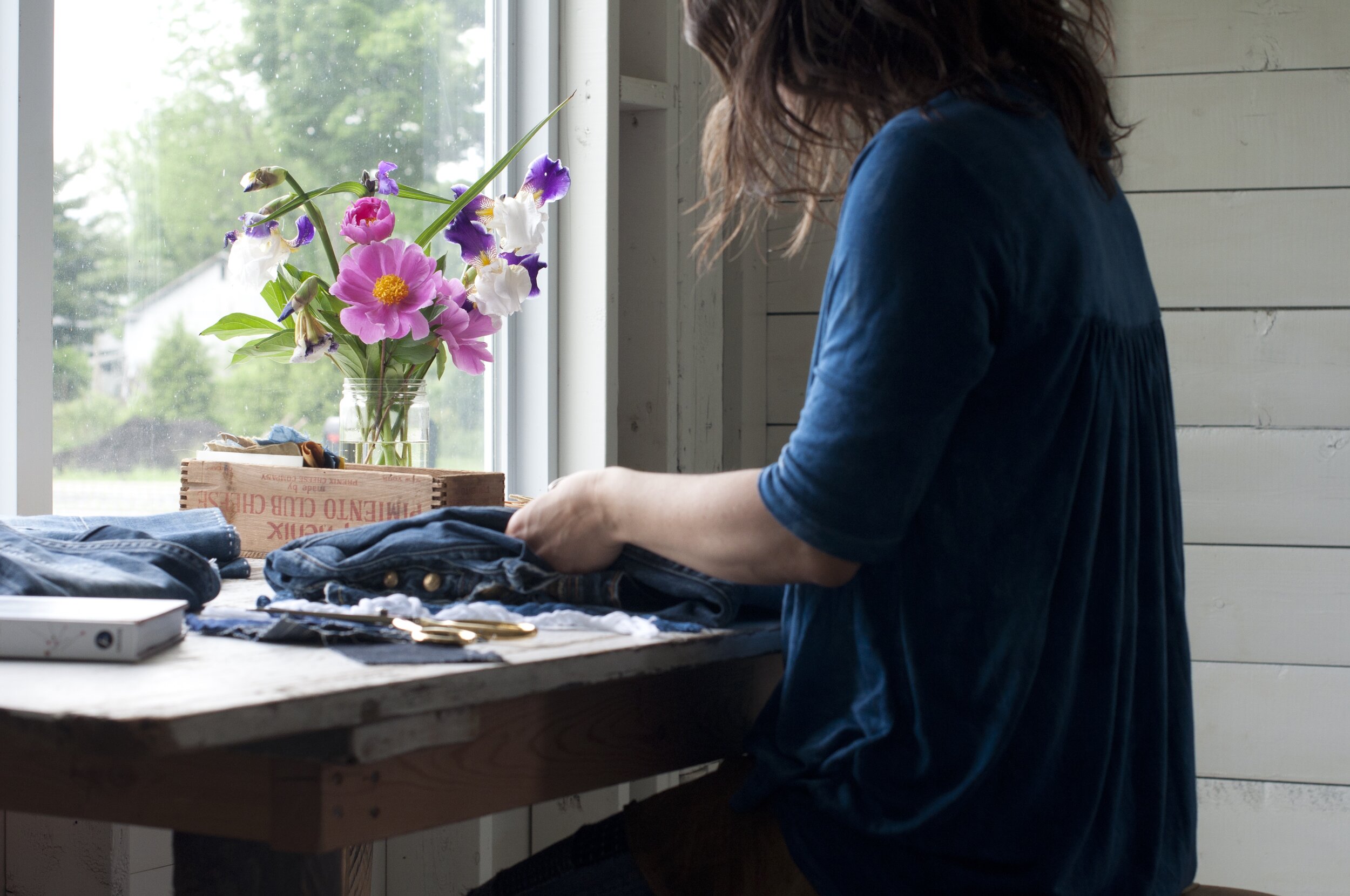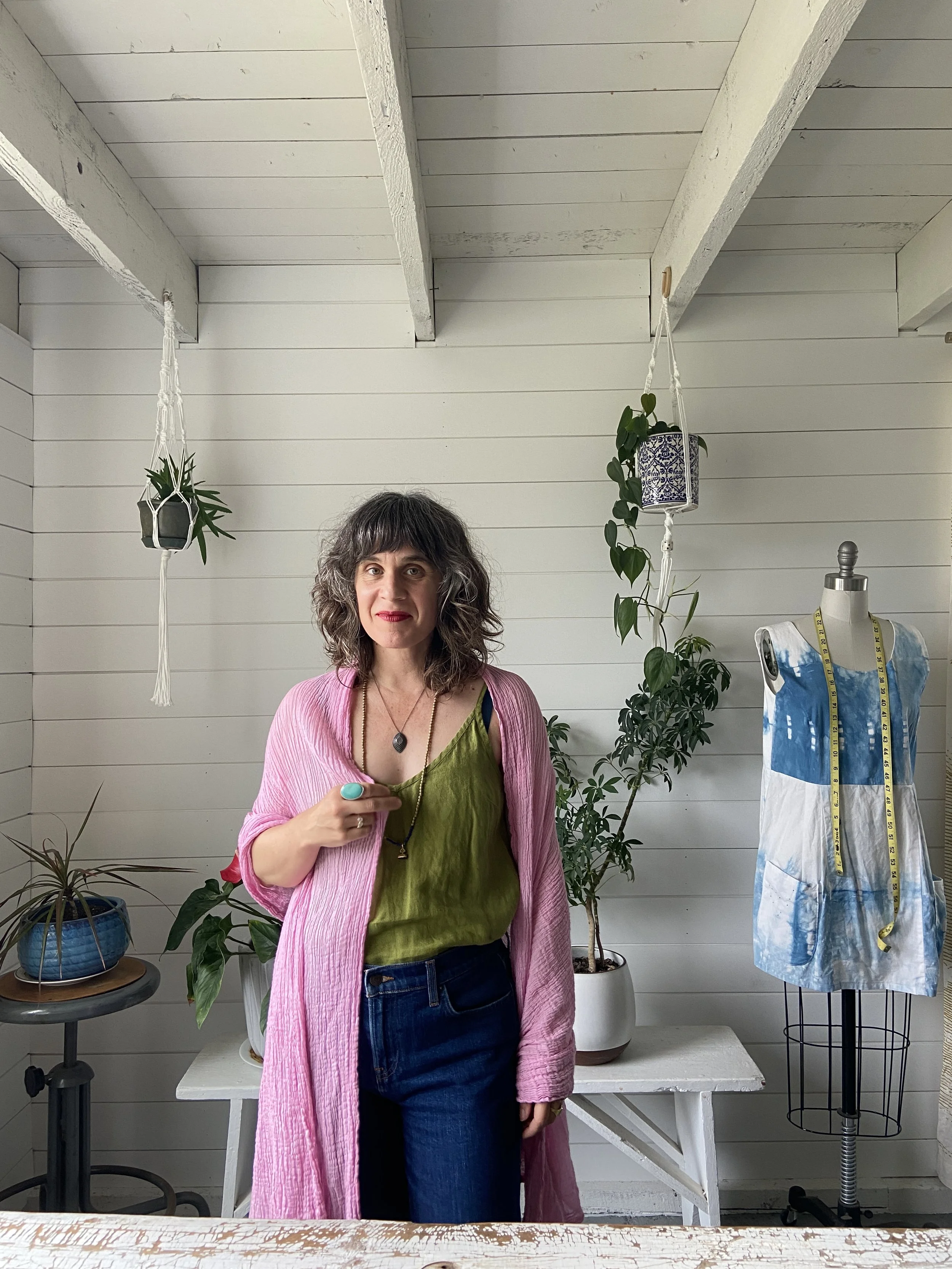“Use what you have. Make what you love. The rest will follow.”
—Katrina L. Rodabaugh
Hi, I’m Katrina.
I’m an artist and writer working across disciplines to explore sustainability through craft techniques. I love the intersection of fiber arts, fashion, and sustainable design. Mostly, I mend things—jeans, sweaters, our old farmhouse and so much more. I’ve published three books, Make Thrift Mend (2021); Mending Matters (2018); and The Paper Playhouse (2015). But I’ve been writing poems and essays for as long as I can remember.
My work has appeared in publications like the New York Times, Boston Globe, Martha Stewart Living, Mother Earth Living, Selvedge Magazine, Peppermint magazine, Sewing Magazine, Sunset magazine, Sweet Paul Magazine, Taproot magazine, and more. I write nonfiction books and essays; teach online and in-person, including small classes in my converted barn studio; and design limited-edition fiber art projects.
I love interdisciplinary solutions—I earned a B.A. in Interdisciplinary Studies with a focus in Environmental Studies and an M.F.A. in Creative Writing with a focus on poetry and book arts. I spent more than a decade working in nonprofit arts galleries and theaters but my fiber arts training started as a child at my mother’s sewing machine. I currently live with my husband and our two young sons in a very old farmhouse in the Hudson Valley of New York. We grow dye plants, flowers, herbs, fruits, and vegetables while tending some seriously silly chickens and delightful honeybees.
Nice to meet you.
xoxo,
Katrina

Make Thrift Mend
My sustainable fashion work began as a personal art project, Make Thrift Mend. Started in August 2013, the project was conceived to create solutions in my personal wardrobe regarding the environmental crisis in the fashion industry. Make Thrift Mend was launched four months after the Rana Plaza garment factory collapsed in Dhaka, Bangladesh, killing 1,134 people and injuring 2,500 more. This was a wake up call. And I was determined to create an alternative. I had no idea this personal art project would become the center of my studio work or deepen my commitment to sustainable living. I gave up convenience in fashion and started a relationship with commitment instead.
For the first year of Make Thrift Mend I staved off all new clothing—I focused on mending what I owned, buying secondhand, and making simple garments. The next year I decided to buy new clothing only if it was locally made or handmade. The third year I added new clothing if it was organic, sustainable, and ethically made. The fourth year I turned to my studio materials—buying tools and fibers that were biodegradable, low-plastic, and heirloom quality. The fifth year I missed making things with my hands so I turned back towards handmade garments and taught myself basic knitting.
Each year of the project, I shifted the parameters to challenge myself in new directions. I learned that paying attention to my consumption was paramount, but creativity was paramount too. I’ve never returned to fast fashion but I’ve come to understand the multiplicity of challenges and solutions in conscious clothing. As my Make Thrift Mend project progressed—alongside my passion for secondhand clothing, simple sewing patterns, and mending just about everything—I realized that sustainability is not singular. It’s a journey, not a fixed destination.
(Excerpt from my book, Make Thrift Mend, published by Abrams Books, 2021.)
Studio Values
My studio is rooted in values to support people and the planet—this is a dynamic practice that continues to evolve. Originally from Upstate NY, I lived in the San Francisco Bay Area for thirteen years and Brooklyn, NY for three years but since 2015, home is in the Hudson Valley of NY in an 1820s farmhouse. My studio operates from our carriage barn—an experiment in redesign and adaptive reuse. I’ve worked in the arts and sustainability for over two decades and realize that cultural change requires a lifelong commitment. I’m grateful to my mentors for this long-term vision.
I prioritize sustainable materials in my studio: Organic cotton, linen, hemp, wool, etc. I also use secondhand materials whenever possible— off-cuts and upcycled fabrics. I find endless inspiration in distressed vintage quilts, denim work wear, and heavy linen. I use biodegradable packaging in my shop. I work with local fiber farms, and a local fiber mill, to make yarn for projects like my limited-edition darning kits. I love to collaborate with local craftsfolk. A percentage of shop earnings are donated to projects that support people and the planet. I use mostly garden-grown or locally-harvested plants for my natural dyes. Lastly, I believe the arts are essential to a healthy society and that nature is the ultimate guide.





